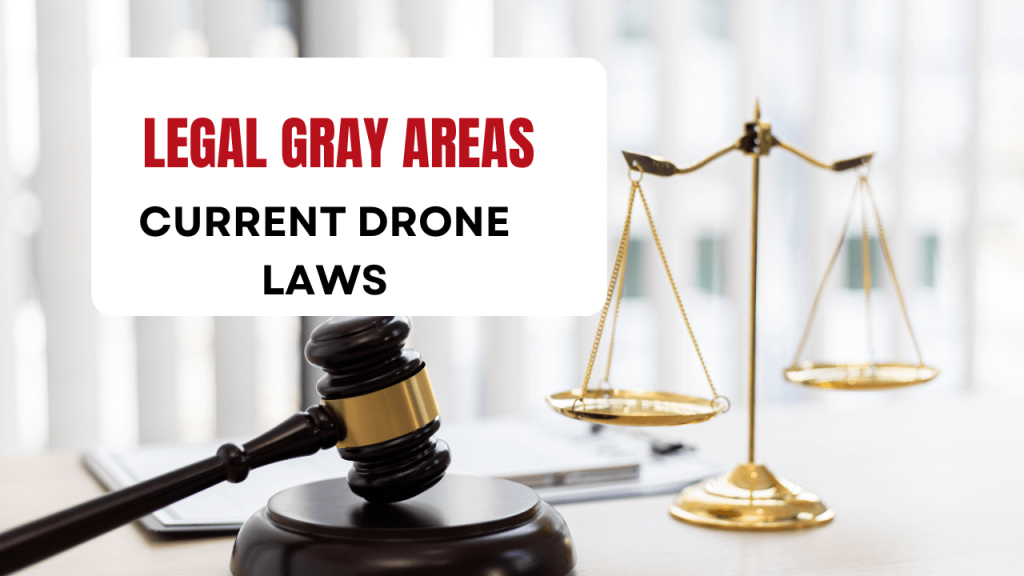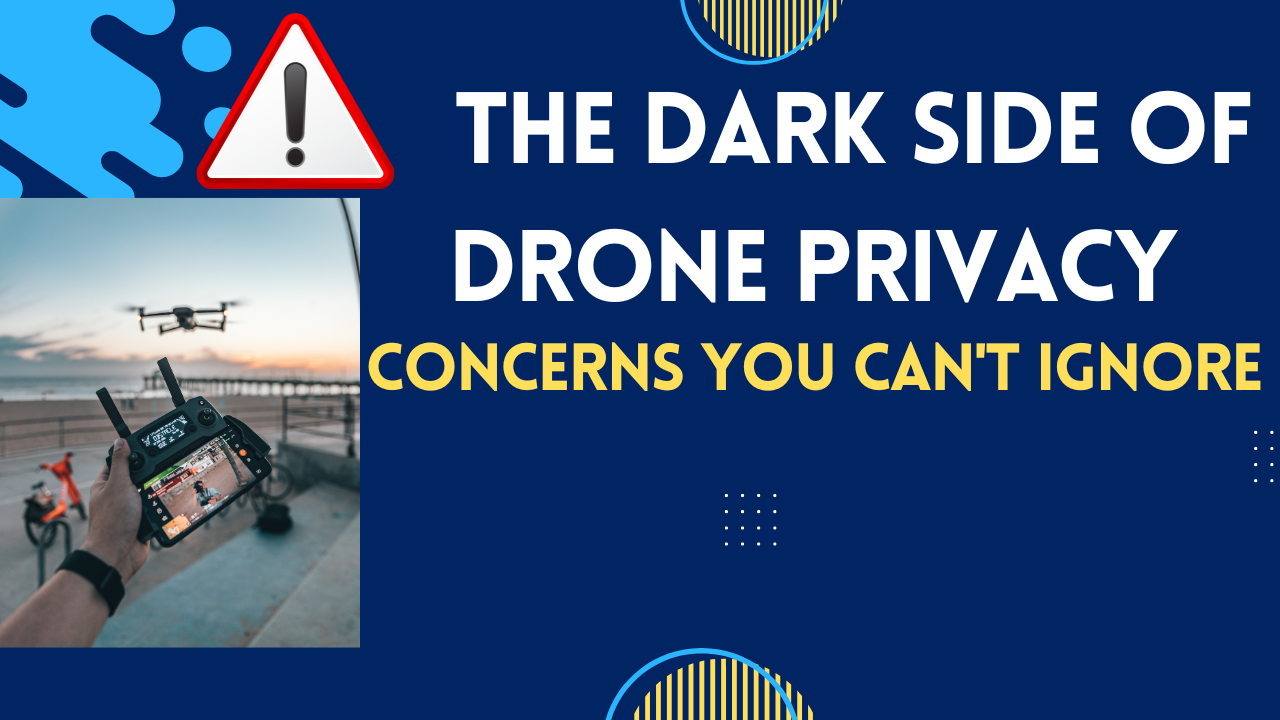In an era where technology advances at breakneck speed. Drone privacy concern is a crucial issue. Drones have soared from novelty gadgets to ubiquitous eyes in the sky. While they offer incredible possibilities, from aerial photography to rapid deliveries, there’s a darker side to these flying marvels that we can’t afford to ignore. Your privacy might be at stake, and you may not even realize it.
As drones become more prevalent, the line between innovation and invasion blurs. Are you prepared for a world where your every move could be captured from above? From legal gray areas to personal privacy threats, this post will uncover the unsettling realities of drone surveillance. We’ll explore how both corporations and governments are leveraging this technology, and most importantly, arm you with the knowledge to protect yourself. Buckle up as we navigate the turbulent skies of drone privacy concerns – it’s time to take control of your personal airspace! 🛡️🕵️♀️
Understanding Drone Surveillance
Types of drones used for surveillance
Surveillance drones come in various shapes and sizes, each designed for specific purposes. Here’s a breakdown of the most common types:
- Quadcopters. Click here to read more on this category
- Fixed-wing drones
- Micro-drones
- High-altitude long-endurance (HALE) drones
| Type | Advantages | Disadvantages |
|---|---|---|
| Quadcopters | Versatile, easy to maneuver | Limited range and flight time |
| Fixed-wing | Long range, extended flight time | Less maneuverable in tight spaces |
| Micro-drones | Discreet, can access confined areas | Limited payload capacity |
| HALE drones | Extensive coverage, prolonged operation | Expensive, complex to operate |
Capabilities of modern drone cameras
Modern drone cameras have advanced significantly, offering high-resolution imaging and advanced features:
- 4K and 8K video recording
- Thermal and infrared imaging
- Optical zoom capabilities up to 30x
- Stabilization technology for clear footage
Range and flight time of surveillance drones
The range and flight time of surveillance drones vary greatly depending on the type and model:
- Consumer drones: 30 minutes to 1 hour, range of 1-5 miles
- Professional drones: 1-2 hours, range of 5-10 miles
- Military-grade drones: 24+ hours, range of hundreds of miles
Real-world examples of drone privacy invasions
Drone privacy invasions have become increasingly common. Some notable examples include:
- Paparazzi using drones to capture celebrity photos in private spaces
- Voyeurs flying drones near residential windows
- Corporate espionage attempts using drones to gather sensitive information
These incidents highlight the need for stricter regulations and increased awareness of drone-related privacy concerns. As we explore the legal landscape surrounding drone use, it’s clear that many challenges lie ahead in balancing technological advancement with personal privacy rights.
Legal Gray Areas

A. Current regulations on drone usage
The landscape of drone regulations is rapidly evolving, but still lacks comprehensive coverage. Here’s an overview of current regulations:
| Regulation Type | Key Points |
|---|---|
| FAA Rules | Registration required for drones over 0.55 lbs, flight restrictions near airports |
| State Laws | Vary widely, some states prohibit drone use for surveillance |
| Local Ordinances | May restrict drone use in specific areas or times |
Despite these regulations, many gaps remain in addressing privacy concerns. For example:
- Limited restrictions on data collection
- Unclear rules for private property overflights
- Inconsistent enforcement mechanisms
B. Gaps in privacy laws regarding aerial surveillance
Existing privacy laws struggle to keep pace with drone technology. Key gaps include:
- Lack of clear guidelines for acceptable altitude of drone flights over private property
- Insufficient regulations on data retention and usage collected by drones
- Ambiguity in defining “reasonable expectation of privacy” in outdoor spaces
These gaps leave individuals vulnerable to potential privacy violations without clear legal recourse.
C. Challenges in enforcing drone-related privacy laws
Enforcing privacy laws for drones presents unique challenges:
- Difficulty in identifying drone operators
- Rapid technological advancements outpacing legislative processes
- Balancing privacy concerns with legitimate uses of drones (e.g., law enforcement, search and rescue)
To address these challenges, lawmakers and enforcement agencies must collaborate to develop more robust and adaptable privacy frameworks. As we delve deeper into personal privacy threats, it becomes clear that the legal landscape surrounding drone usage requires significant attention and improvement.
Personal Privacy Threats
A. Unauthorized filming of private property
Drones equipped with high-resolution cameras pose a significant threat to personal privacy by enabling unauthorized filming of private property. This intrusive capability raises several concerns:
- Invasion of privacy in traditionally secure spaces
- Potential for voyeurism and exploitation
- Unauthorized access to sensitive information
| Privacy Concern | Potential Consequences |
|---|---|
| Backyard surveillance | Loss of personal space |
| Window peeping | Compromised intimacy |
| Capturing security details | Increased vulnerability to crime |
B. Potential for stalking and harassment
The accessibility and maneuverability of drones make them ideal tools for stalkers and harassers. Consider these alarming possibilities:
- Tracking daily routines
- Gathering compromising footage
- Creating a constant sense of surveillance
C. Risk of data breaches from hacked drones
As drones become more sophisticated, they also become more vulnerable to hacking. This presents a new avenue for cybercriminals to access personal data:
- Intercepted video feeds
- Stolen flight logs revealing location patterns
- Compromised onboard sensors collecting sensitive information
D. Inadvertent capture of sensitive information
Even when not intentionally targeted, individuals may find their private information captured by drones. This can include:
- Financial documents visible through windows
- Confidential conversations in outdoor spaces
- Personal activities in seemingly private areas
The pervasive nature of drone technology demands increased awareness and proactive measures to protect personal privacy in an increasingly surveilled world.
Corporate and Government Surveillance Concerns
Industrial espionage risks
Corporate espionage has taken a new turn with the advent of drones. These flying devices can easily bypass traditional security measures, posing significant risks to businesses. Here’s a breakdown of the potential threats:
- Aerial photography of sensitive areas
- Interception of wireless communications
- Covert surveillance of executive meetings
- Data theft through hacking of unsecured networks
| Risk Factor | Severity | Potential Impact |
|---|---|---|
| Aerial Surveillance | High | Loss of trade secrets |
| Wireless Interception | Medium | Data breaches |
| Meeting Espionage | High | Strategic information leaks |
| Network Hacking | Critical | Intellectual property theft |
Mass surveillance possibilities
The widespread use of drones by government agencies raises concerns about mass surveillance. Drones equipped with advanced cameras and sensors can monitor large areas and crowds, potentially infringing on citizens’ privacy rights. Law enforcement agencies argue that drone surveillance can prevent crime, but the question remains: at what cost to personal freedom?
Potential for abuse by law enforcement
While drones can be valuable tools for law enforcement, their use without proper oversight can lead to abuse. The ability to conduct warrantless surveillance raises constitutional questions. Some key concerns include:
- Unrestricted aerial monitoring of private property
- Facial recognition technology integration
- Disproportionate surveillance of minority communities
- Evidence gathering without due process
Data collection and storage issues
The massive amount of data collected by drones presents significant challenges. Questions arise about who owns this data, how it’s stored, and for how long. There are also concerns about data breaches and unauthorized access. As drone usage increases, robust data protection measures become crucial to safeguard privacy and prevent misuse of sensitive information.
Protecting Your Privacy from Drones
Legal measures to take against privacy violations
When dealing with drone-related privacy violations, it’s crucial to understand your legal options:
- Document the incident
- Report to local law enforcement
- File a complaint with the FAA
- Seek a restraining order if necessary
Here’s a comparison of legal actions you can take:
| Action | Pros | Cons |
|---|---|---|
| Civil lawsuit | Potential compensation | Time-consuming, expensive |
| Criminal charges | Stronger deterrent | Requires law enforcement involvement |
| FAA complaint | Federal oversight | Limited to aviation regulations |
| Restraining order | Immediate protection | Temporary solution |
Physical deterrents for your property
To safeguard your property from unwanted drone intrusions, consider these physical deterrents:
- Install privacy screens or tall fences
- Plant trees or tall shrubs for natural barriers
- Use anti-drone netting over sensitive areas
- Apply reflective window films to prevent aerial photography
Technological solutions to detect and block drones
Employ cutting-edge technology to protect your privacy:
- Drone detection systems
- Radio frequency jammers (where legal)
- Geofencing software for your property
- Anti-drone drones for interception
Advocating for stronger privacy laws
Now that we’ve covered personal protection measures, it’s essential to push for broader legislative changes. Engage in advocacy efforts by:
- Contacting your local representatives
- Joining privacy-focused organizations
- Participating in public hearings on drone regulations
- Sharing information about drone privacy concerns on social media
Remember, protecting your privacy from drones requires a multi-faceted approach combining legal, physical, and technological strategies.
As drone technology continues to advance, it’s crucial to remain vigilant about the privacy risks they pose. From personal intrusions to large-scale surveillance, drones have the potential to significantly erode our privacy if left unchecked. The legal landscape surrounding drone usage is still evolving, leaving many gray areas that could be exploited.
To protect yourself, stay informed about local drone regulations and consider implementing privacy measures around your property. While drones offer many benefits, it’s essential to strike a balance between technological progress and safeguarding our fundamental right to privacy. By raising awareness and advocating for stronger privacy protections, we can help ensure that the future of drone technology respects individual liberties.
